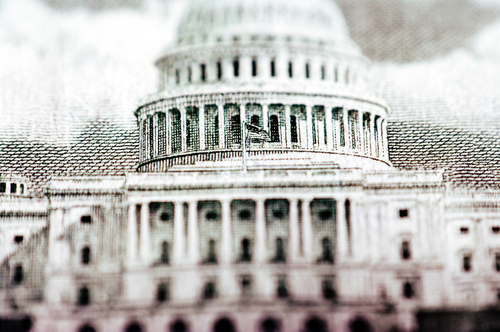
Monetary Policy & Inflation | Rates | US

Monetary Policy & Inflation | Rates | US
This article is only available to Macro Hive subscribers. Sign-up to receive world-class macro analysis with a daily curated newsletter, podcast, original content from award-winning researchers, cross market strategy, equity insights, trade ideas, crypto flow frameworks, academic paper summaries, explanation and analysis of market-moving events, community investor chat room, and more.
In December 2022, Fed Chair Jerome Powell explained why the federal funds rate is likely to remain high for now. He acknowledged core goods inflation had eased in recent months and housing services inflation would fall in 2023. However, he said, non-housing core services inflation – largely influenced by strong labour market conditions – would remain high for a substantial period.
Using the Fed’s unemployment rate forecasts, a new Federal Reserve Bank of Cleveland working paper shows the likely path of core Personal Consumption Expenditures (PCE) inflation until 2025. It finds inflation is unlikely to moderate to the levels even Powell is anticipating unless the US experiences a deep recession. The unemployment rate would need to hit 7.4% for core PCE to hit 2.1% by 2025. These results align with similar work summarised last year.
The authors collect quarterly data on the Producer Price Index (PPI), core goods inflation, housing services inflation, median non-housing core services inflation, and the unemployment rate from 1985 to 2022. They use these variables to forecast core PCE inflation through 2025.
They forecast each of the variables above, then create a composite forecast of core PCE inflation using weights that depend on how each variable influences inflation. For example, the weight for core goods inflation is the nominal share of the PCE of core goods over the nominal PCE excluding energy and food.
The authors first present the model projection for core PCE inflation through 2025, along with 70% confidence intervals and the Summary of Economic Projections (SEP) (Chart 1). These forecasts are conditional on the December SEP path for unemployment.
Initially, the authors expect a stronger deceleration of inflation relative to the Fed due to the forecasted uptick in unemployment. However, after Q3 2023, core PCE is projected to decline more slowly than the December SEP forecasts. By year-end 2025, the paper’s central forecast of 2.7% is higher than the Fed’s 2.1%.
The drop in core goods inflation from a slowing economy will drive a strong PCE decline in 2023 (Chart 2a). Non-housing core services inflation is projected to fall to 3.8% by year-end 2023, driven by downward pressure from rising unemployment (Chart 2b). Lastly, housing inflation is likely to bottom out at 4.5% in H2 2024 (Chart 2c).
The slower-than-expected decline in core PCE is because of the Fed’s unemployment rate forecast (Chart 3). In the December SEP, the unemployment rate was projected to peak at 4.6% in 2024. Instead, the paper estimates that to achieve the 2.1% core PCE inflation that the Fed predicts, the economy would need to endure a severe recession (Chart 4). The severe recession scenario has unemployment plateauing at 7.8% in Q2 2024, more than double the Fed’s current estimate.
This short paper gives a concise forecast of US core PCE inflation. All things equal, we may not see sub-2% inflation this decade! The key reasons are a strong labour market and higher housing inflation.
Spring sale - Prime Membership only £3 for 3 months! Get trade ideas and macro insights now
Your subscription has been successfully canceled.
Discount Applied - Your subscription has now updated with Coupon and from next payment Discount will be applied.